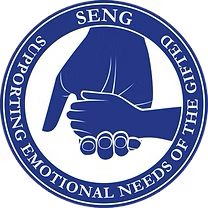“You are not a drop in the ocean. You are the entire ocean in a drop.”
— Rumi
May means different things to different people. For me, this month brings reflections of Mother’s Day and my own mother’s birthday. In recent years, May has also become synonymous with Mental Health Awareness. Before that, during the more difficult periods of finding the right educational spaces for my children, May meant one thing: school is ending—what a relief!
Each of us experiences the world through a unique lens. Sometimes we feel free to share our inner world; other times, we hesitate, waiting for a “better time” that may never come. As I reflect on my own journey, one thread has remained constant: the deep need for safe spaces to process the relationship between my inner experience and the outer world. Last November, I experienced a near-death situation that provided a new perspective and a strong reminder to create space for myself so I can continue to create space for others.
The Power of Safe Spaces
Research supports what many of us know intuitively—safe, supportive environments are essential to mental health. They foster a sense of agency, belonging, and emotional regulation (Andrew et al., 2023; Meherali et al., 2025). For gifted individuals and families, these spaces are critical to identity development, emotional resilience, and intellectual growth. The types of safe spaces I’ve needed have changed over time. But in every phase of my life, they’ve played vital roles: helping me heal, reset, recharge, and find acceptance—both of myself and of my relationship to the world around me. I’m deeply grateful for those who have extended such space to me, and for the moments when I’ve found the courage to seek or create it.
Recognizing and Creating Safe Spaces
When we began our gifted parenting journey, I felt overwhelmed by conflicting information—experts, family, friends, and my own reactions all pulling in different directions. I needed somewhere to process and sift through it all. Over time, I developed a simple, practical way to recognize safe spaces: I paid attention to how my energy and mood shifted in different contexts, with different people. Were they elevated or drained? Did I feel expanded or diminished?
In spaces where I feel truly safe, I find greater capacity to reflect, to listen with curiosity, and to offer others the same. These spaces create a positive flywheel effect: the more I engage in them, the more I can give, receive, and grow.
Safe Spaces Are a Shared Responsibility
Creating, inviting, and sustaining safe spaces is not a one-time act—it is a compassionate, ongoing commitment. It asks us to examine our beliefs, assumptions, and default patterns. But the rewards are profound. In these spaces, we—and those around us—can breathe more freely, connect more deeply, and unfold more fully.
As we reflect on our roles—whether as a parent, partner, educator, colleague, or friend—I invite you to ask:
- What does safety look like for you?
- What is safe for the people in our lives?
- What is one action I can take today to offer space for someone else, or for myself?
It could be a short text, a heartfelt email, or a spontaneous phone call to let someone know you’re thinking of them. It might also look like choosing a restorative activity—a walk, a few quiet minutes, or an expressive practice—that opens up space within
Creating space can start with moments that are quiet, focused, and filled with color. Every bead placed is a reminder that we deserve the time and space to be ourselves, and each bead enriches our whole world.
Perhaps it takes the form of pausing to watch a hummingbird visit, to remind ourselves that the smallest moments of connection can open spaciousness.
At SENG, we believe that every person deserves a space where we can shine and simply be. Together, let’s continue building those spaces—with intention, empathy, and joy.
References
Andrew, L., Karthigesu, S., Coall, D., Sim, M., Dare, J., & Boxall, K. (2023). What makes a space safe? Consumers’ perspectives on a mental health safe space. International Journal of Mental Health Nursing, 32(5), 1355–1364. https://doi.org/10.1111/inm.13174
Meherali, S., Nisa, S., Aynalem, Y. A., Ishola, A. G., & Lassi, Z. (2025). Safe spaces for youth mental health: A scoping review. PLOS ONE, 20(4), e0321074.

